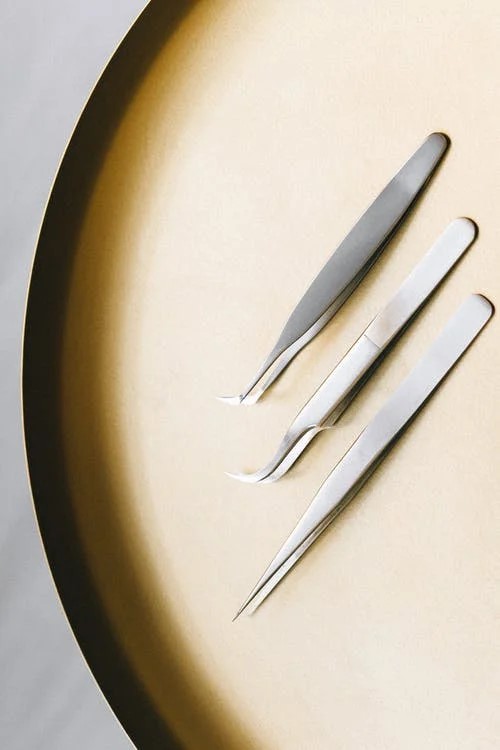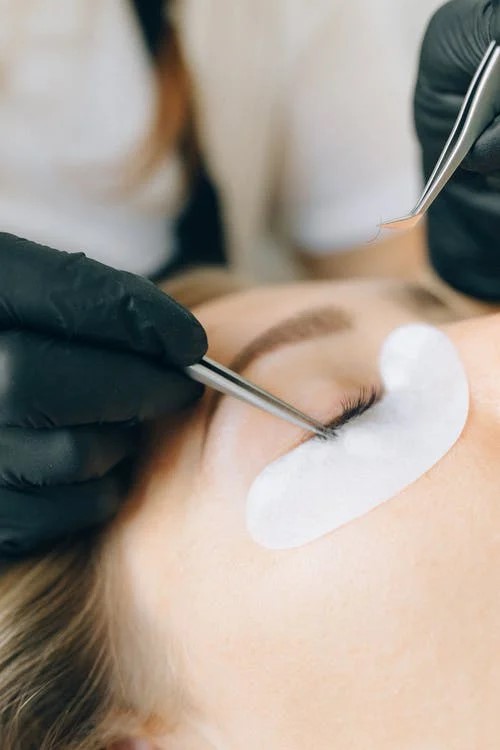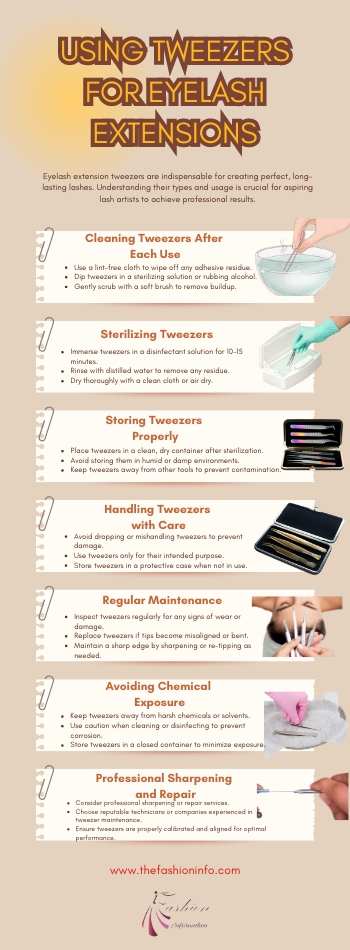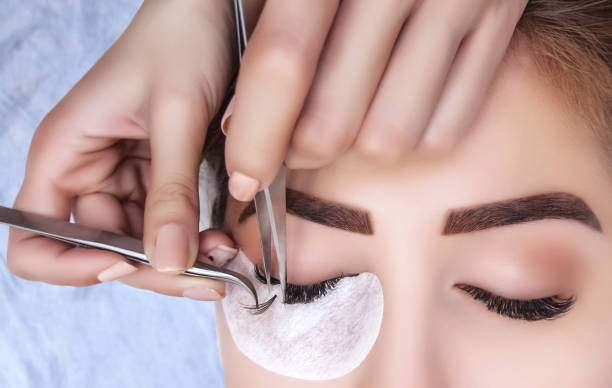Table of Contents
Introduction:
Getting perfect, voluminous eyelashes that are natural-looking is a dream of many. Luckily enough, many people get to make that dream a reality when they get eyelash extension tweezers. Professionally done, eyelash extensions usually last for 6-8 weeks, unlike false eyelashes that have to be removed at the end of each day.
For a professional lash artist or lash stylist, every lash extension procedure requires undivided attention and excellent expertise. Not many tools are used during the process. Eyelash tweezers are undoubtedly essential for a successful eyelash extension. Unlike other tools, an eyelash extension tweezer would be used by the professional for the entirety of the process. Hence, understanding how various types of tweezers can be used is essential for any aspiring lash artist.
What are the different types of eyelash tweezers?
Eyelash tweezers are divided into different types based on the shape of their tip. It is the shape that determines the purpose of the tweezer.

● Shape
An I shape means the tip of the tweezer is pointed. These are typically used for attaching individual lashes in a classic lash extension.
● F Shape
Like the I shape tweezers, the F shape is well-equipped to handle isolated lashes and is used for a classic lash extension.
● A Shape
Another excellent pick for the classic lash extension, A shape tip is not as pointed as I shape or F shape but is perfectly capable of handling isolated lashes.
● X Shape
X-shaped tweezers are used for a classic lash extension as well. They are preferred because they do not cause tension in your fingers.
● L Shape
Stylists mainly prefer these tweezers to make handmade fans of lashes to add volume in a lash extension.
● S Shape
Perfect for a volume lash extension, S shape tweezers come in handy when you need to attach volume fans. It can also be used for a classic extension with clients who have deep-set eyes.
● Round Shape
Not typically used to attach lashes, round-tipped tweezers are preferred because they do not risk injury. They generally are used to remove tape or eye patches after the procedure is done.
Consider the Material
Tweezers are metallic and available in stainless steel and titanium.
● Stainless Steel
This is the most common type of tweezers that professionals use. Even though they are supposed to be stainless, they need to be maintained to not rust. These tweezers contain nickel which can lead to a possible allergic reaction in some people.
● Titanium
The proper rust-free tweezers, titanium tweezers, are used in medicinal procedures simply because they do not cause allergic reactions. They are lighter than stainless steel tweezers and also more durable.
How to Care for Eyelash Extension Tweezers
There are some simple tips and tricks that can increase the life of your eyelash extension tweezers:
- Assign different tweezers for different purposes. Simply put, use a different tweezer to attach thicker lashes and another one for fine lashes. This would allow the tweezers to retain their grip for fine lashes.
- Be gentle when it comes to the tips of the tweezers. Place them gently on your work table, and do not tap the tip to remove the eyelashes as they can break under too much force.
- Remove the adhesive from the tips as soon as possible. It can impact the life of your tweezers and affect the weight balance.
- Use a dedicated case to put the tweezers in when not in use.
The Weight
While choosing which tweezer would be the best for doing a lash extension, weight is a factor that is rarely taken into account. On average, a full lash extension can take over two hours. Imagine having a tweezer that is not only heavy but also uncomfortable in your hand. Using any kind of tweezer is not a big deal if it is for a small amount of time.
However, the wrong tweezer, based on the grip and weight, can impact your efficiency and tire your hand. If a tweezer is especially unsuitable, it can cause cramping in your finger, which would hinder the procedure. There is no hard and fast rule for choosing the best tweezer for you. You would have to go with your instincts.
Choose a pair of tweezers that you are the most comfortable with and one which best suits your technique.

Can Tweezers Trigger Skin Irritation?
As mentioned above, if tweezers are made of stainless steel, the nickel in the tool can cause irritation for some clients. For people with a metallic allergy, symptoms can range from itchiness to irritation and can even cause a sore. If any such symptoms are seen during the procedure, wash the affected area with water and soap. You can also apply an ice pack with some diluted vinegar. Do not insist on continuing if symptoms persist and consult a medical professional.
Apart from metallic allergy, Eyelash Extension Tweezers can also cause bacterial infection. It all depends on the hygiene protocols you follow as a professional. The area around the eyes is sensitive and also contains a lot of bacteria. If that bacteria is transferred from one client to another, it can trigger an allergic reaction. Also, keep extra sanitized tweezers at hand if you drop those you are working with on the floor.
A Word of Caution
When you handle tweezers, you should always be cautious of your surroundings because you do not accidentally cause an injury. Inform your client not to make any sudden movements because it can cause the sharp tip of the tweezers to injure the eye area. If you are working with other professionals nearby, give yourself enough room to work without getting accidentally bumped by someone.
Conclusion
Eyelash extension is an art that needs to be done with perfection and dedication, or else it would be of no use. Take care of the tip of the tweezer you are using for a particular procedure and choose the tweezer’s material wisely. Always sanitize your tools and handle them gently to prolong their life. Half of your work as a professional will be made easy if you choose the right tools for the lash extension procedure.
Infographic: Using Tweezers for Eyelash Extensions


